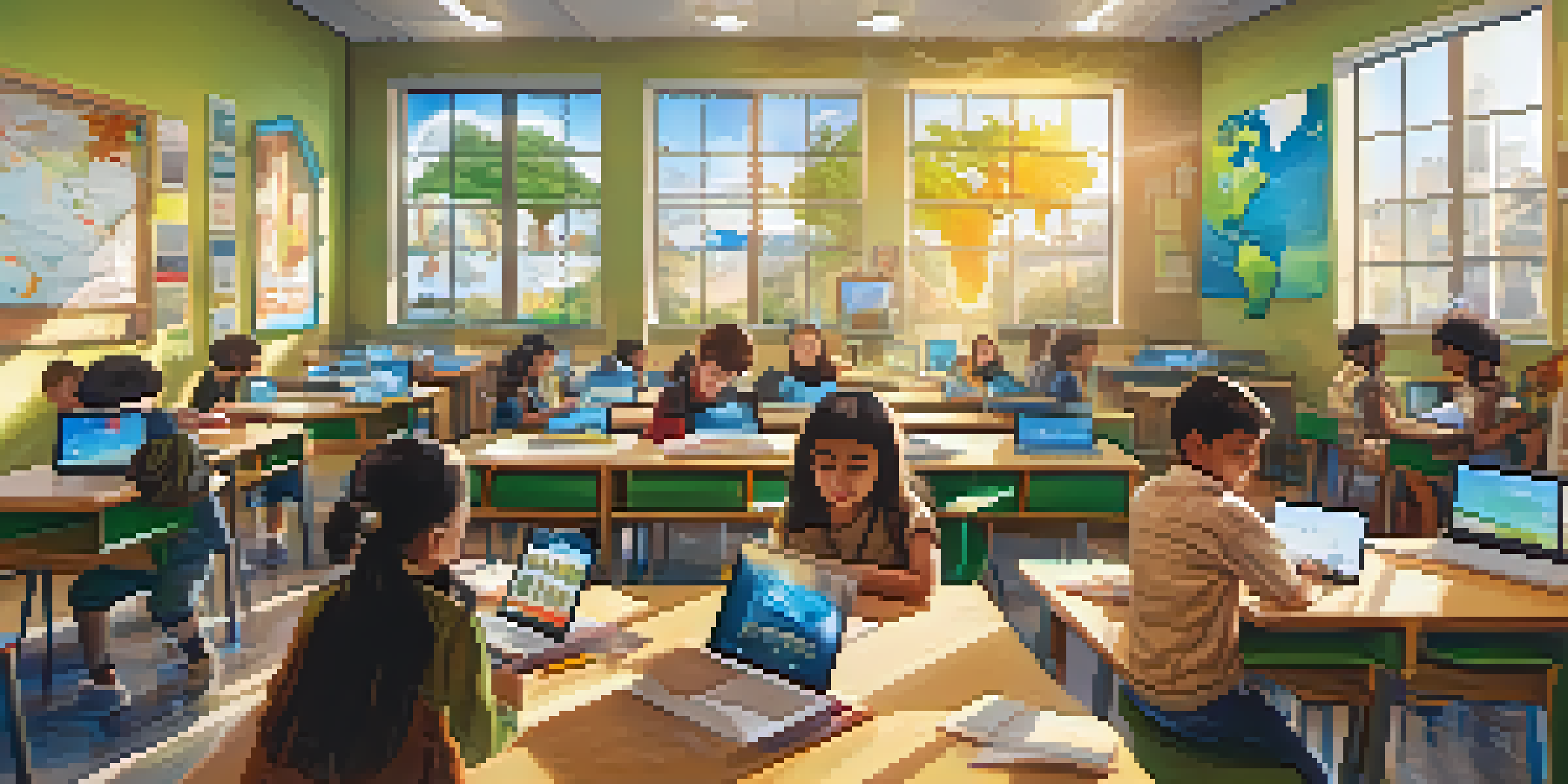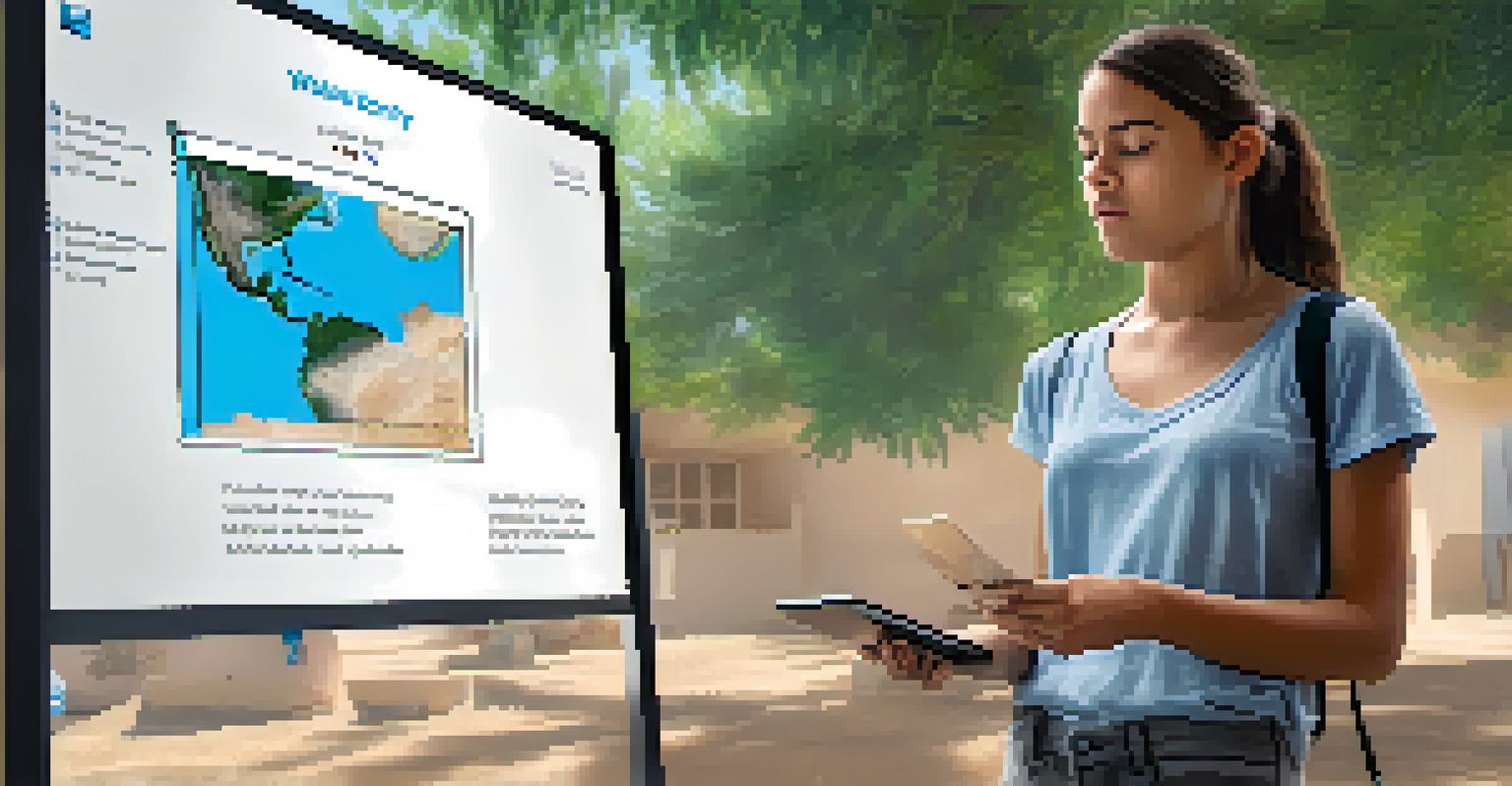The Role of AR in Enhancing Global Citizenship Education

Understanding Global Citizenship Education
Global Citizenship Education (GCE) aims to foster a sense of belonging and responsibility towards the global community. It encourages learners to engage with diverse cultures, understand global challenges, and develop critical thinking skills. By embracing these values, GCE prepares individuals to act positively in their local and global contexts.
Education is the most powerful weapon which you can use to change the world.
At its core, GCE emphasizes the importance of empathy and active participation in societal issues. Students learn to appreciate different perspectives, which is crucial in our interconnected world. This foundational understanding paves the way for innovative educational tools like augmented reality (AR) to take center stage.
As educators seek more engaging methods to deliver GCE, AR emerges as a powerful ally. By blending the physical and digital worlds, AR offers unique experiences that can deepen understanding and inspire action on global issues.
The Basics of Augmented Reality Explained
Augmented reality (AR) overlays digital information onto the real world, enhancing our perception of our surroundings. Unlike virtual reality, which creates an entirely immersive experience, AR allows users to interact with both real and digital elements simultaneously. This duality makes AR particularly effective in educational settings.

For example, using a smartphone, students can point their device at a globe and see real-time data about climate change impacts in different regions. This interactive approach not only captures attention but also encourages deeper engagement with the content. It’s like bringing textbook lessons to life right before your eyes!
AR Enhances Global Citizenship Skills
Augmented reality provides interactive experiences that foster empathy, critical thinking, and engagement in global citizenship education.
With AR, learners can visualize complex concepts and explore scenarios that might be difficult to grasp through traditional methods. This innovative technology has the potential to revolutionize how we approach global citizenship education and make it more accessible and impactful.
The Impact of AR on Learning Engagement
One of the standout benefits of AR in education is its ability to boost student engagement. By providing interactive experiences, AR can transform passive learning into an active exploration. Students aren’t just reading about global issues; they’re experiencing them in a captivating and memorable way.
The best way to predict the future is to create it.
Consider a classroom where students can use AR to explore a refugee camp’s layout or the effects of deforestation in real time. This kind of immersive experience fosters a deeper emotional connection to the subject matter, motivating learners to think critically and empathically about global challenges.
Moreover, AR can accommodate different learning styles. Visual learners, kinesthetic learners, and even auditory learners can find value in AR experiences, making it easier for educators to reach every student. When engagement levels rise, so too does retention and understanding.
Fostering Empathy Through Augmented Experiences
Empathy is a cornerstone of global citizenship education, and AR has a unique way of cultivating it. By allowing students to step into someone else's shoes—quite literally—AR can create powerful emotional connections. For instance, simulations can place students in scenarios faced by individuals in crisis, promoting understanding and compassion.
Imagine an AR experience where students can witness the life of a child in a war-torn country. Such a powerful narrative can evoke feelings that textbooks often fail to convey. This emotional engagement encourages students to not only understand global issues but also feel compelled to take action.
Bridging Cultural Gaps with AR
AR technology allows students to explore diverse cultures, promoting appreciation and understanding in an increasingly interconnected world.
Ultimately, fostering empathy through AR prepares students to be more responsible global citizens. It nurtures a sense of solidarity and shared responsibility, essential qualities for addressing the challenges our world faces today.
Bridging Cultural Gaps with AR Technology
AR can serve as a bridge between cultures, allowing students to explore diverse traditions and lifestyles without leaving the classroom. By immersing learners in different cultural experiences, AR promotes appreciation and respect for global diversity. This exposure is vital in a world where cultural misunderstandings can lead to conflict.
For example, students could use AR to participate in a traditional festival from another country, experiencing its significance and customs firsthand. This interactive learning fosters curiosity and encourages students to ask questions about cultures different from their own.
By breaking down barriers, AR helps create a more inclusive educational environment. It empowers students to engage with the world's richness, preparing them to navigate and contribute positively to a diverse global community.
Enhancing Critical Thinking with AR Scenarios
Critical thinking is essential for effective global citizenship, and AR can significantly enhance this skill. By presenting complex scenarios that require analysis and problem-solving, AR challenges students to think critically about real-world issues. This hands-on approach encourages learners to assess situations from multiple perspectives.
Imagine an AR simulation where students must devise a solution to a water crisis in a developing country. They would need to consider various factors, such as environmental impact, economic feasibility, and social implications. This type of critical engagement fosters deeper understanding and equips students with the skills necessary for informed decision-making.
Challenges in AR Implementation
Despite its potential, effective AR integration in education faces challenges like technology access disparities and the need for educator training.
By integrating AR into GCE, educators can cultivate a generation of thinkers who are ready to tackle global challenges. These skills will serve students well as they navigate an increasingly complex world.
Challenges and Future of AR in Global Education
While the potential of AR in global citizenship education is immense, there are challenges to consider. Access to technology can vary widely among schools and communities, creating disparities in learning opportunities. Ensuring that all students have access to AR tools is crucial for equitable education.
Moreover, the effectiveness of AR relies on thoughtful integration into the curriculum. Educators need training and support to effectively utilize AR in their teaching practices. Without proper guidance, the technology may not be fully leveraged to its potential.

Looking ahead, the future of AR in global citizenship education is promising. As technology continues to evolve and become more accessible, AR has the potential to revolutionize how we teach and engage with global issues. By overcoming current challenges, we can create a more informed, empathetic, and responsible generation of global citizens.